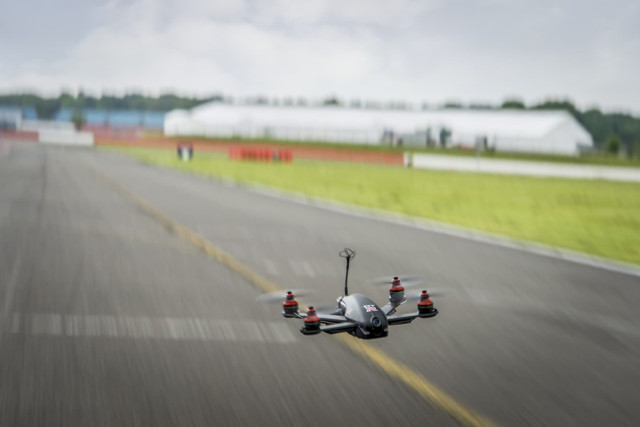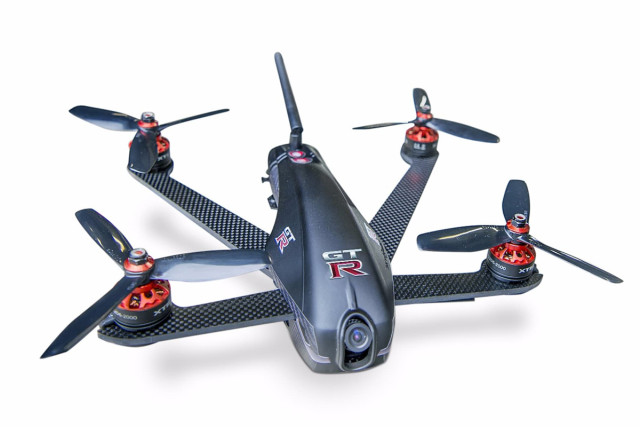With drone racing steadily on the rise, it is no surprise what has been accomplished by ” target=”_blank”>Nissan. Unveiled last month is the GT-R drone, which was built specifically to keep up with the 2017 Nissan GT-R on the track.
Let the video alone prove this drone’s insane speed, which can attain 60 miles per hour in a blazing 1.3 seconds. It is clear that Nissan was serious about engineering this drone as it has been touted as one of the fastest drones in the world.
Introduced at the Goodwood Festival of Speed, an annual event held in England, Nissan put the drone on full display in this video, which closed a 1.2 mile section of the course at Silverstone racetrack in England.
NISMO driver Ricardo Sanchez piloted the new GT-R as the 2015 British National Drone Racing champion James Bowles took control of the GT-R drone. The 2017 GT-R shows off its new aerodynamic design, which was made to keep it planted to the tarmac no matter the situation.
What was surprising was with how good the new GT-R’s handling capabilities were, it was no match for the agility of the drone, which maneuvered through the course with minimal effort.
From a standstill, the GT-R drone is capable of keeping up with the new GT-R. However, the speed of the drone has a limit, as it caps out at 115 MPH. With such instant speed, it is no wonder drones are gaining so much popularity as a hobby and sport simultaneously. Where the drone excels are the slalom parts of the closed course due to its tiny turning radius of 0.3 meters compared to the new GT-R’s 12.2 meter radius.
Designed by Tornado XBlades Racing, the GT-R drone is powered by four propellers mated to individual 2,000 kilovolt XNova motors and a 1,400mAh lithium-polymer battery. The frame of the GT-R drone weights only 1.5 pounds, making it as light as a feather.

Watching drone racer James Bowles pilot the drone with his headset almost looked like he was playing a video game.
Worth noting, Tornado XBlades Racing was the winning team at the 2015 World Drone Prix, proving Nissan only wanted the best to build their vision of a speedy drone. Compared to the GT-R with it’s twin-turbo 3.8-liter V6 engine boasting 470 pound-feet of torque, the drone only has 10.3. Like a four cylinder off the line, the drone will be ahead, but only to get blown out after a small gain is made against the bigger, badder Nissan GT-R.
Both products of sophisticated engineering, we praise the construction of both of these monsters. Nissan’s GT-R will forever be a staple in the tuner world.
What are your thoughts on drone racing, or better yet the new GT-R? Is it something that Nissan should invest in with their supercar GT-R? Feel free to let us know what you think in the comments below.

Up close and personal with the GT-R drone, which is even adorned with carbon fiber to match its automotive counterpart.























